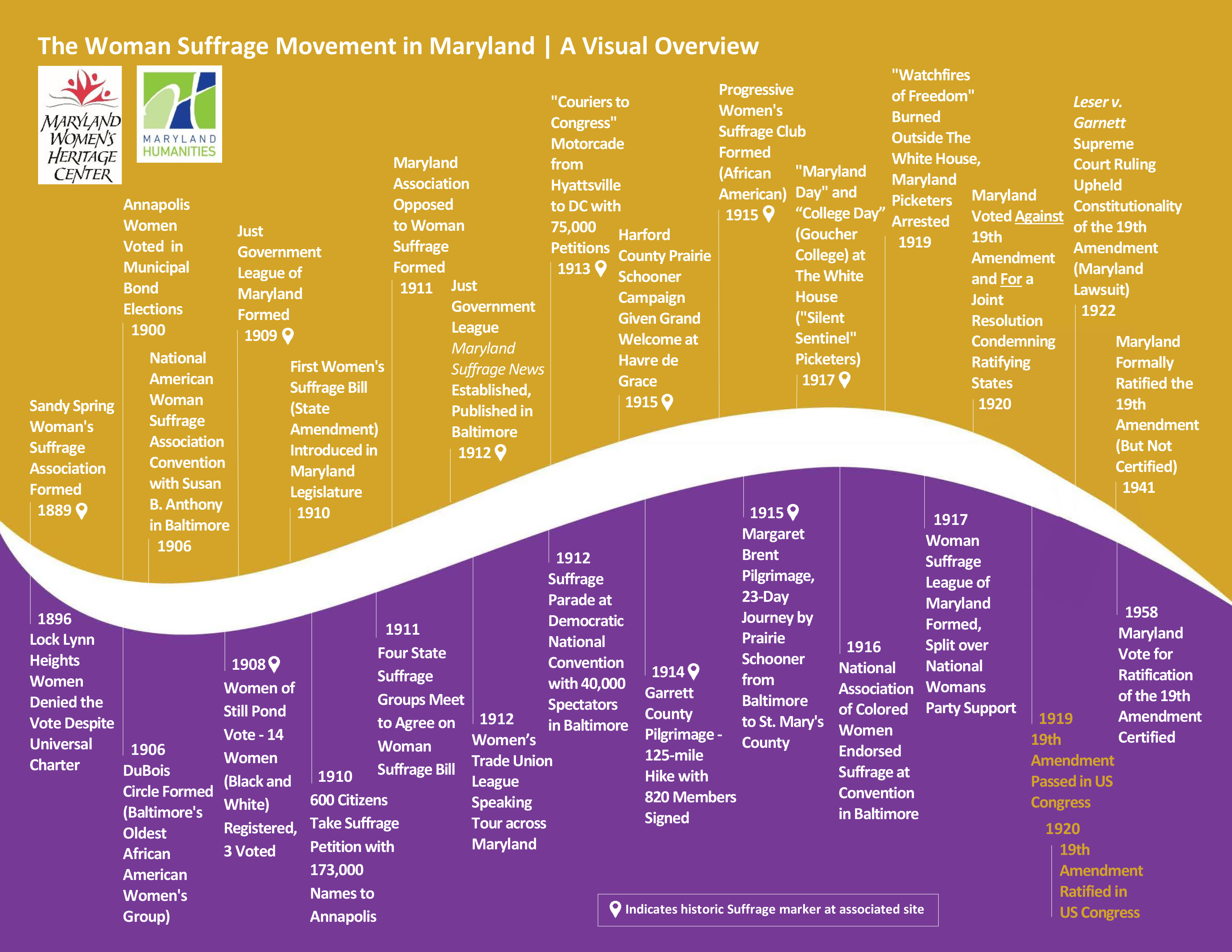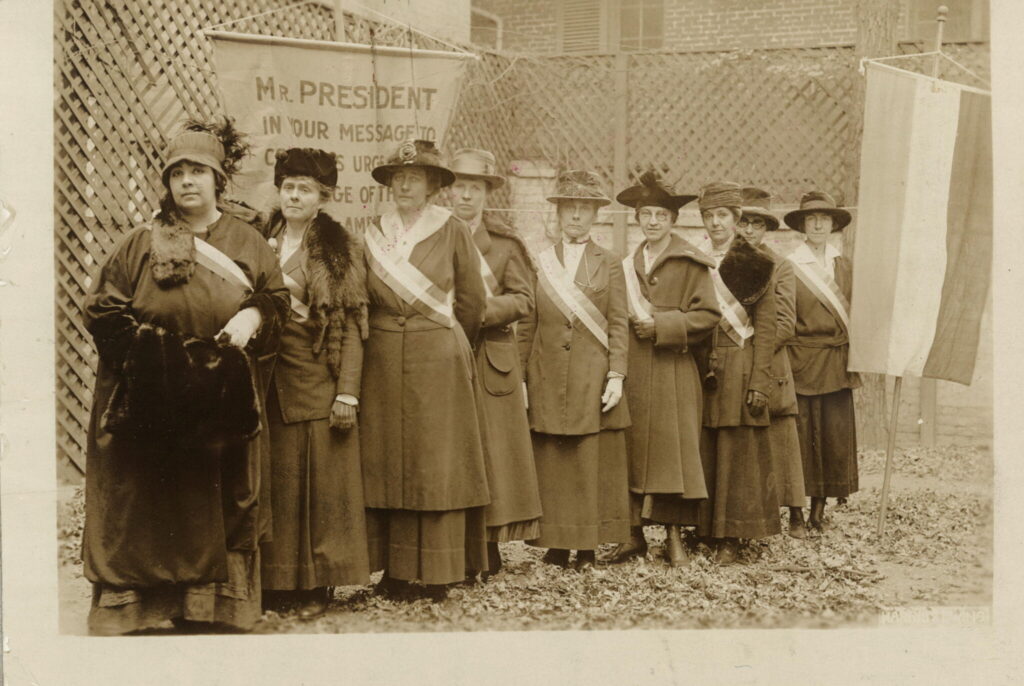
Biography of Mary Bartlett Dixon Cullen, 1873-1957
This biographical sketch first appeared on the Online Biographical Dictionary of the Woman Suffrage Movement in the United States and appears here by courtesy of the publisher, Alexander Street.
By Margaux Jacobs, undergraduate, University of Maryland, College Park
Nurse, Suffragist, Occoquan Prisoner
Mary Bartlett Dixon was born in Baltimore, Maryland, in 1873. Her father, William T. Dixon, was a member of the Board of Trustees of the Johns Hopkins University Hospital before becoming President of the hospital, a role that he served for eleven years. Mary Bartlett Dixon was admitted to the Johns Hopkins School of Nursing under unusual circumstances. The principal of the School of Nursing, Adelaide Nutting, wanted to reduce the number of hours student nurses worked a week. Nutting thought that by admitting the Hospital’s President’s daughter, Mary Bartlett Dixon, the President, Mr. Dixon, would be persuaded to change the hours after seeing how overworked his daughter was. Nutting did not think Mary Dixon would last in the program because she would have to work longer and harder than other students because of her father’s position. Nutting’s strategy worked, however: President Dixon reduced the hours for student nurses and his daughter exceeded the expectations of her superiors and graduated with the Class of 1903. Mary Bartlett Dixon was a woman with many interests, including women’s suffrage, which she believed could be not be separated from the nursing profession.
In June 1906, Mary Bartlett Dixon wrote a letter to the editor of the American Journal of Nurses criticizing the journal’s neutral stance on women’s suffrage. She described a visit to her county almshouse as a representative of the Maryland State Nurses’ Association and “pointed out that in the state of Maryland, women were politically placed on the same level as the inmates she had just seen.” In October 1908, Dixon published an essay titled “Votes for Women” in the Nurses’ Journal of the Pacific Coast. She argued that nurses could not be excluded from politics because every action they take is inherently political. Dixon asserted, “no other issue or matter could be attended to until nurses were politically oriented.” To justify her claim, she wrote how “the health, wealth, and happiness of society and of the nursing profession relied on nursing’s increasing political involvement in social reforms,” and she concluded that “nurses’ concerns with injustice in the world rendered their political involvement unavoidable.” Dixon urged her fellow nurses to find out the voting laws in their states, and she was outraged to find that in Maryland “anyone over the age of twenty-one and who lived in a community for one year was eligible to vote ‘except women, children, idiots, and criminals.'” Dixon knew that women deserved to be treated equally to men, rather than like criminals and children. The lack of respect for women on the state level is what drew Dixon, along with other suffragists, to fight for the national amendment.
In October 1909, Mary Bartlett Dixon was the chairman of the Woman’s Suffrage Association of Maryland, and they compiled a pamphlet titled “Opinions of Representative Men and Women on the Franchise for Women.” This pamphlet was full of essays by distinguished scholars in favor of women’s suffrage, and it is just one example of the various tactics suffragists used to gain attention for their cause.
A respected nurse with varied interests, Mary Bartlett Dixon worked very hard during World War I, fighting for nurses to receive officer rank. Dixon was still very concerned with women gaining the right to vote, as she believed political issues were at the core of every issue, and without a vote, women had no voice. In March 1913, Woodrow Wilson received the first suffragists in the White House—led by Alice Paul, and including Mary Bartlett Dixon and three others. Because state level suffrage was met with great resistance, suffragists like Dixon knew that a constitutional amendment was the only way to gain equality everywhere. On November 10, 1917, Dixon posed with a group of women protestors for a photograph including the suffrage banner and a critique of President Wilson. That day, Dixon was arrested for picketing the White House. She was sent to the Occoquan Workhouse along with Lucy Burns and many other suffragists.
On April 6, 1920, in Princeton, New Jersey, Mary Bartlett Dixon married Dr. Thomas S. Cullen, a gynecologist at Johns Hopkins, in a small ceremony surrounded by family. They honeymooned in Atlantic City, New Jersey. As Mrs. Cullen, she is remembered as the editor of the Johns Hopkins Nursing Alumnae Magazine and was consistently active on the Alumnae Board. A woman with a true activist spirit, Dixon founded the Talbot County League of Women Voters after the battle for suffrage was won. She helped to establish the Easton Memorial Hospital, the Talbot County chapter of the Children’s Aid Society, and, as her hearing began to deteriorate in her older age, she became a “leading spirit” for the Baltimore League for the Hard of Hearing. After her husband died in 1953, she donated her Baltimore home to the American Cancer Society.
A Quaker, she was a member of the Friends Meeting in Easton, Maryland. Mary Bartlett Dixon Cullen died on September 6, 1957, at her home, Moreling Chance, near Easton. She was buried in Spring Hill Cemetery, in Easton, Talbot County, Maryland.

